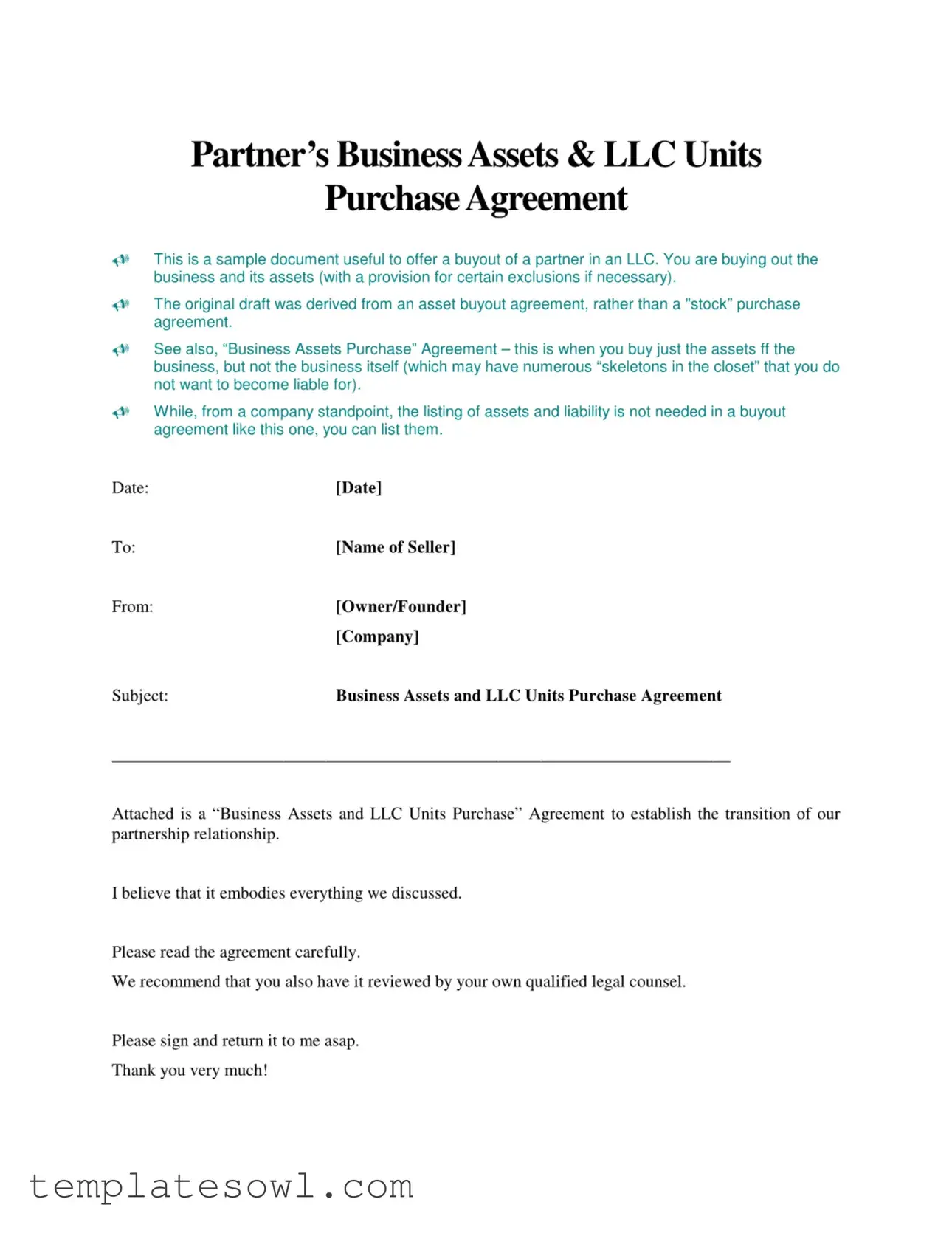What is a Buyout Agreement?
A Buyout Agreement is a legal document that facilitates the buyout of a partner's shares or assets in a business. It outlines the terms and conditions under which one partner purchases the other partner's business interests, including any related assets and liabilities. This agreement is particularly useful in a Limited Liability Company (LLC) setting.
What are the key components of the Buyout Agreement?
The Buyout Agreement typically includes details about the purchase price, the assets being sold, and the rights and responsibilities of both the buyer and the seller. It also includes sections for the description of the business, the effective date of the agreement, and any specific exclusions regarding the business's assets. Exhibits attached to the agreement provide detailed listings of the assets, inventory, and any intellectual property involved in the transaction.
Why is it important to have a Buyout Agreement?
Having a Buyout Agreement is crucial as it protects both parties involved in the transaction. It clearly defines what is being bought and sold, outlines payment terms, and delineates responsibilities. This minimizes disputes and misunderstandings in the future. Legal counsel is often recommended to ensure all aspects are adequately covered and compliant with state laws.
What should be included in the exhibits attached to the Buyout Agreement?
Exhibits are integral to the Buyout Agreement as they provide specific details about the transaction. Exhibit A lists the current members and owners of the business. Exhibit B outlines the financial terms of the sale. Exhibit C, D, and E provide thorough lists of products, inventory, accounts receivable, and machinery or equipment being transferred. These details ensure clarity and prevent any ambiguities regarding what is included in the sale.
How does the closing date work in a Buyout Agreement?
The closing date is the date when the transaction is officially finalized. It may be the same day the Buyout Agreement is signed or can occur a few days or weeks later. This timeframe allows the buyer to verify that all business assets are in order. It also provides a period for any necessary preparations, such as funding the purchase and gathering documentation.
Can the Seller retain any rights or assets after the sale?
Yes, it is possible for sellers to retain certain rights or assets post-sale, but this must be clearly outlined in the Buyout Agreement. Any exclusions regarding what is not being sold should be specified in the agreement to prevent misunderstandings and ensure both parties are aware of the exact terms of the sale.










